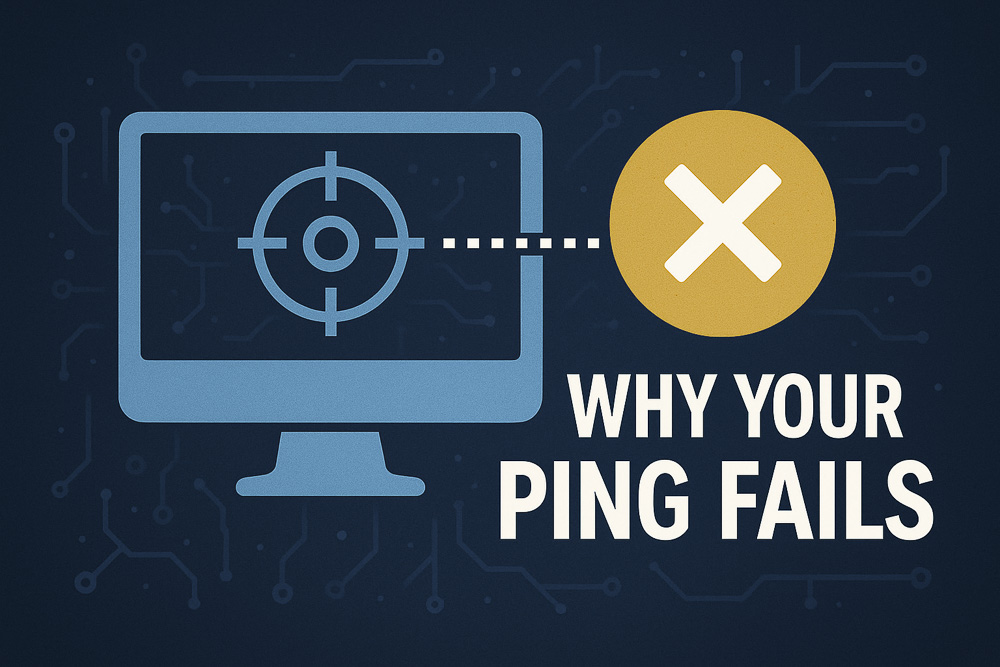Why Your Ping Fails
It’s not always downtime — here’s what it really means when a ping doesn’t get a reply.

Ping is often the first tool people reach for when testing if a host is online. It’s fast, simple, and built into almost every OS. But what does it mean when a ping fails — and should you be worried?
This article breaks down the most common reasons a ping might time out or show unreachable errors, and what you can do to figure out what’s really happening.
Run a test: Use our HostChecker Ping Tool to check any IP or domain in seconds — directly from your browser.
What Does Ping Actually Do?
Ping sends small ICMP echo requests to a target IP address and waits for a reply. If the target responds, ping reports back the round-trip time in milliseconds. If not, it shows a timeout or unreachable error. That’s it — simple but powerful.
Top Reasons a Ping Might Fail
- The server is truly down: If the host is offline or unreachable, ping will naturally fail.
- ICMP is blocked: Some servers and networks block ping (ICMP) traffic on purpose to reduce surface area for abuse or attacks.
- Firewalls or rate limiting: Security tools might drop ICMP packets if they’re deemed suspicious or excessive.
- Destination behind a proxy or CDN: Services like Cloudflare may drop ping requests at the edge network level.
- Bad DNS resolution: If a domain fails to resolve to an IP address, ping won’t work at all.
How to Tell If It’s Really Down
Ping is useful, but not definitive. Just because a ping fails doesn’t mean the server is offline — it might just not reply to ping. Try these instead:
- Run a traceroute to see how far packets get
- Use DNS lookup to confirm the domain resolves
- Check the site or IP in a browser or HTTP status tool
Combining these checks gives you a clearer picture of what’s really going on.
Why It Matters
When you’re trying to troubleshoot a server issue, every second counts. Ping gives you a fast signal — but interpreting it properly is key. Misreading a blocked ping as a total outage can lead to wasted time or false alarms.
That’s why HostChecker includes ping, traceroute, DNS, WHOIS, and SSL checks all in one spot — so you’re not just guessing.
Conclusion
A failed ping doesn’t always mean the worst. Sometimes it’s blocked, filtered, or even just mistyped. The real key is knowing what else to check — and acting based on all the clues, not just one signal.
Need a second opinion? Run a HostChecker scan and see for yourself.